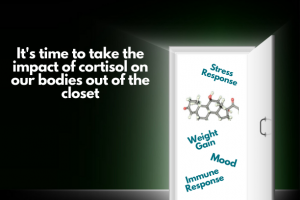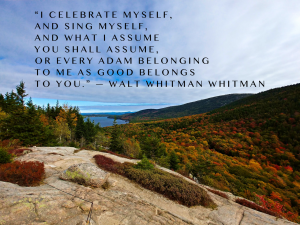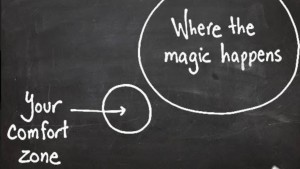 Once upon a time, people began telling stories and we haven’t stopped. We spend our days telling them and listening to them from our favorite story tellers. News, podcasts, print, social media and books. We can’t get enough. We’re biologically and psychologically wired for stories. And, it doesn’t stop at night. Dreams come to tell us stories about ourselves and what we’re learning or how to understand our experiences.
Once upon a time, people began telling stories and we haven’t stopped. We spend our days telling them and listening to them from our favorite story tellers. News, podcasts, print, social media and books. We can’t get enough. We’re biologically and psychologically wired for stories. And, it doesn’t stop at night. Dreams come to tell us stories about ourselves and what we’re learning or how to understand our experiences.
If you’ve ever thought you were not creative, think again. Consider how effortlessly you create whole movies with sets, characters, plot, colors, and dialog. It just comes to you. So, yes, you are very creative. You wrote, directed, and starred in the story up to seven times every night. Aren’t you amazing?
There was a time when these were the stories (dreams) that people shared with others the next day. Decisions were made based on these stories. They were important. What happened? Who began saying “just a dream?” implying they were not anything?
Well, science has come full circle. Dreams are important. You are important. Your inner life is important. Technology can identify the regions of the brain that are active during dreaming. It is the same area of the brain that processes memories and emotions while we are awake. Life events can show up in your dreams over and over (recurring dreams) or bring us nightmares to get our attention.
Are you interested in your dream stories? Here are some ways to reap the benefits of your dream stories:
1. When you wake up, don’t jump up. Lie still with your eyes closed and concentrate on what you were just dreaming about. Don’t worry if you can’t remember everything. A word or two, a snippet of a scene will do. Then, write what you remember in your journal that you keep by your bed. It is not necessary that you “get” the story. Just as you wouldn’t open up a novel and read a random page, you wouldn’t expect to know what the novel is about. Your dream is like that. A page in your life. But over time, when you read more pages, you will see recurring themes, people, words, places, etc.
2. There are many books written on how to understand dreams. They are like cookbooks. They are only suggestions that may give you a hint at your dream’s meaning. Don’t take them as gospel. In fact, don’t take your dreams literally. Murdering or loving someone you know does not predict anything about them. The dreams are about you. Try free association to get at the real meaning. For example, in the case of murdering, what needs to change or be put to rest in your life? Loving someone that is taboo? What are the impressions you have of that person? The dream could mean you are longing to have a more social life or to show those aspects of your personality in your waking life.
3. You may have had a dream where you knew you were dreaming. These are called Lucid Dreams. We know that people can learn to use this type of dream to change the dream, the outcome of the dream. If the monster shows up in your dream, you can take charge and shrink it to the size of a toy or chase it away. This can reduce stress that comes from unresolved emotions, such as comes from traumatic events.
4. Since you create every aspect of your dream, you can imagine you are everything in the dream. It’s a Gestalt way of understanding dreams. For example, if you are driving a red car in your dream, you could ask yourself what it would be like to be a red car. Would you be seen more easily? Could you go fast? Are you afraid of something going too fast? And what would the road say? What’s it like to be driven over? Are you the driver or the passenger in the car? You can see how one memory of your dream serves to bring you information about your inner life that continues in your waking life, often unawares.
5. Imagine yourself sitting around the table (campfire) etc. and telling your dreams to others. What parts would you leave out? Why? We are secret story tellers, still. Once upon a time, the part you leave out may be the part that is most important. It still is. Unless you have a therapist or like-minded friends, it probably is best not to share them with just anyone. But, that doesn’t mean you have no way to understand your story. Your journal will become your friend. You could use your phone to record your dreams stories as well as the insights that pop into your mind during the day.
6. The best part and the hardest for a writer to write is the ending of a story. I still like the ones that end with “happily ever after” even though I’ve come to appreciate the novels that leave me hanging. That’s more like life, isn’t it? You may think you should make a decision, take action because a dream inspired you, like divorce, move away to a desert island, etc. Maybe but sit with that for a while. Ask yourself if you are taking this literally. Is it healthy, practical, or realistic? Don’t throw those ideas away. Remember, it was one page in your novel. What will the next chapter reveal?
Can you use some coaching or therapy help?
For more personalized help developing a strategy that will help you create the life you truly want, please consider coaching or therapy. This is the perfect time to get started. Every journey starts with a first step.
We can talk it over and decide the best way forward. Questions? Email me at patriciabrawley@earthlink.net.









